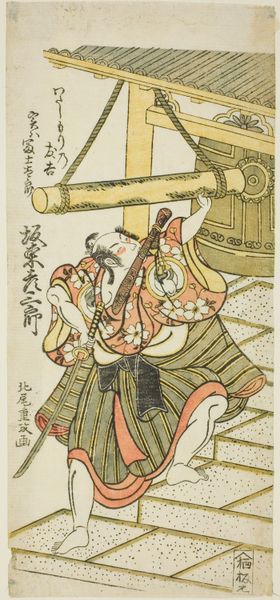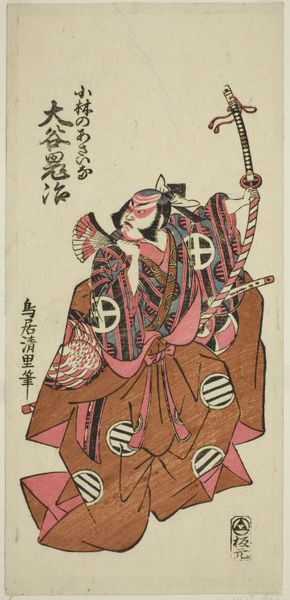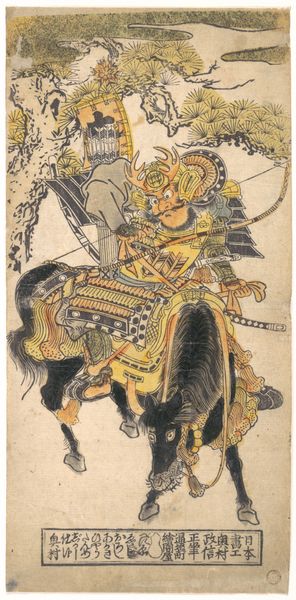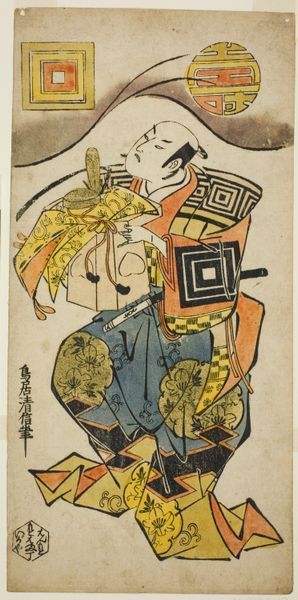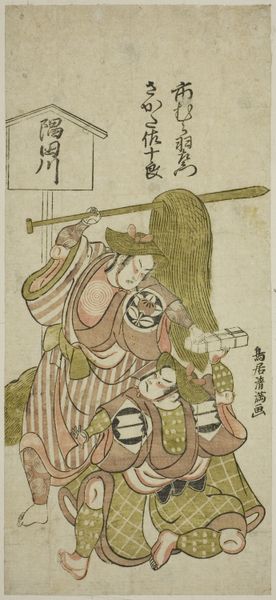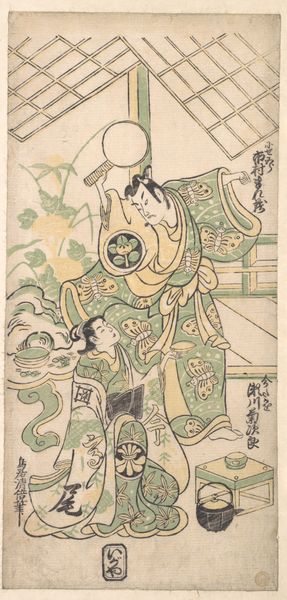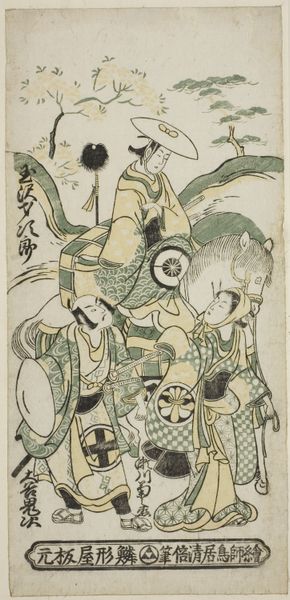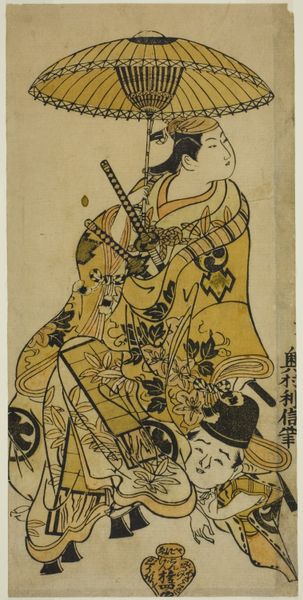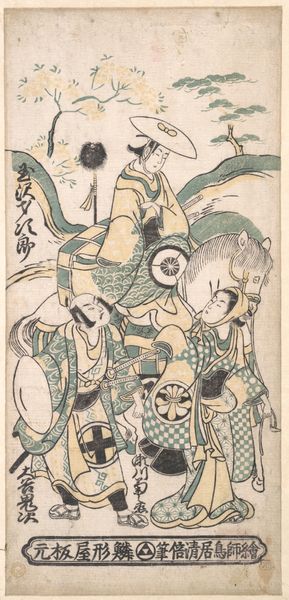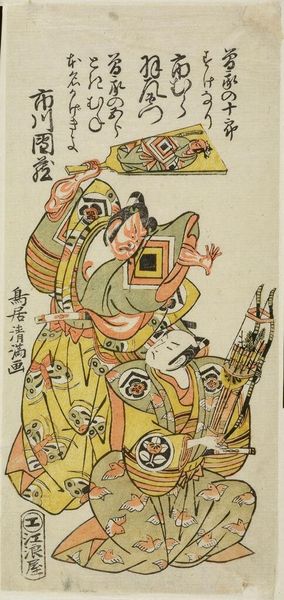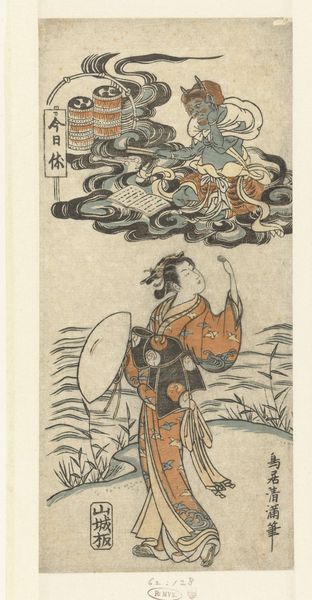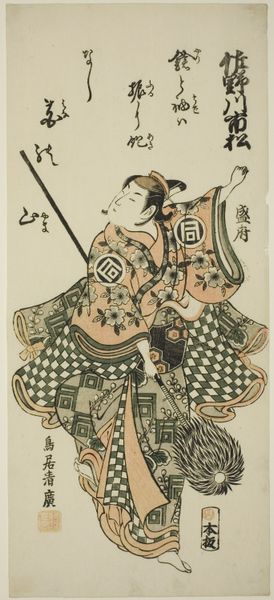
The Actors Bando Hikosaburo II as Watanabe no Tsuna and Matsumoto Tomijuro as Hakamadare no Yasusuke in the play "Furitsumu Hana Nidai Genji," performed at the Ichimura Theater in the eleventh month, 1765 1765
0:00
0:00
print, woodblock-print
# print
#
asian-art
#
ukiyo-e
#
figuration
#
woodblock-print
#
genre-painting
Dimensions: 12 1/8 × 5 1/2 in.
Copyright: Public Domain
Curator: What strikes you most when you first encounter this dynamic woodblock print? It's a work from 1765, crafted by Kitao Shigemasa. Editor: The energy is incredible! I get this immediate sense of dramatic tension, like a scene caught in mid-action. And the colours! Bold but still refined, almost theatrical in their intensity. Curator: Indeed. This work, titled "The Actors Bando Hikosaburo II as Watanabe no Tsuna and Matsumoto Tomijuro as Hakamadare no Yasusuke in the play "Furitsumu Hana Nidai Genji," offers us a glimpse into the vibrant world of 18th-century Japanese Kabuki theatre. Editor: Theatre, yes! I can almost hear the music and the roaring applause. The figure on the horse is so dominant, poised with his sword... the actor beneath seems almost comically overwhelmed. Curator: Precisely. We see Bando Hikosaburo II in the role of Watanabe no Tsuna, a heroic figure, confronting Matsumoto Tomijuro as Hakamadare no Yasusuke, a thief. Notice the careful details in their costumes—they reveal not only the characters' status but also the artistic conventions of the time. Editor: And the patterns! They're so intricate, playing with textures and depth in a way that feels surprisingly modern. There's this feeling of organised chaos, if that makes sense. I find the flat perspective somewhat striking and atypical. Curator: I do! It is worth considering the print's socio-political context. Ukiyo-e, this style of woodblock printing, served as a medium for popular culture. Restrictions were imposed on the Kabuki scene in terms of lavish attire, the choice of materials and design of the costumes were therefore deployed to show wealth and status through alternative approaches. Editor: Knowing that just enriches the experience. So, this seemingly simple print becomes a window into the complexities of its time—the class dynamics, the theatrical world, and the artist's own clever subversion of those regulations. I feel almost like I can intuit more about it each second I am examining it. Curator: I completely agree. By situating Shigemasa's work within its cultural context, we uncover a depth of meaning and gain valuable insights into 18th-century Japan and beyond. Editor: And for me, it is a reminder that even in art, seemingly constrained forms can provide some of the most potent means for artists to respond, communicate, and create. Thank you!
Comments
No comments
Be the first to comment and join the conversation on the ultimate creative platform.
